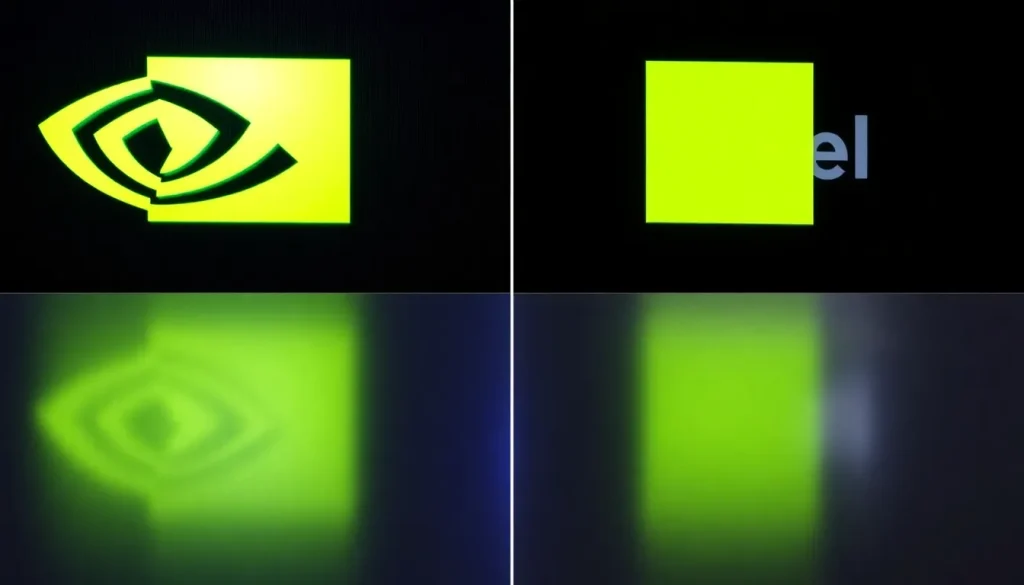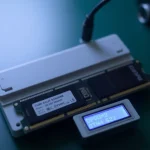Nvidia and Intel partner to develop multiple chip generations in $5 billion deal

In a groundbreaking partnership that has reshaped the landscape of the semiconductor industry, Nvidia has announced a significant investment in Intel. This collaboration marks a pivotal moment in the tech world, where two giants are set to work together on innovative chip technologies. The implications of this partnership are profound, not only for the companies involved but also for the broader market.
As competition intensifies in the fields of artificial intelligence and personal computing, the alliance between Nvidia and Intel signals a strategic shift aimed at leveraging their respective strengths. Let's dive deeper into the details of this collaboration and what it means for the future of technology.
Nvidia invests $5 billion in Intel
Nvidia has made headlines by purchasing $5 billion in Intel stock, acquiring approximately 4% ownership of the company. This investment is more than just a financial maneuver; it represents a commitment to co-develop "multiple generations of custom data center and PC products." The two firms aim to enhance their technology offerings through a seamless integration of Nvidia's AI capabilities with Intel's CPU technologies.
The partnership will allow Intel to create custom x86 chips that cater to Nvidia's specifications, which will then be integrated into Nvidia's AI infrastructure platforms. This is a significant step, as it enables both companies to combine their expertise while maintaining their distinct identities in the market.
Transforming consumer technology
On the consumer front, the collaboration aims to produce x86 System on Chips (SoCs) that incorporate both Intel CPUs and Nvidia RTX GPU chiplets. This innovation is expected to lead to more compact gaming laptops and potentially pave the way for Nvidia's entry into the handheld gaming market, similar to devices like the Steam Deck or ROG Ally.
The implications for gaming and personal computing are enormous. By integrating the best of both companies' technologies, they can create powerful, energy-efficient devices that could redefine user experiences.
A dramatic reversal in industry dynamics
Just a couple of decades ago, the idea of these two companies collaborating would have seemed improbable. In 2005, Intel contemplated acquiring Nvidia for potentially $20 billion. At that time, Nvidia was primarily known for its GeForce graphics chips, while Intel was on the cusp of launching its Core series, which would dominate the consumer PC market for years.
Fast forward to today, and the tables have turned. Nvidia's revenue and market capitalization have soared, largely due to its dominance in the AI chip market, while Intel has faced significant challenges in keeping up with competitors like TSMC. The recent partnership reflects a strategic pivot for both companies, as they seek to counterbalance market pressures and position themselves for future growth.
Political and economic considerations
The timing of this partnership is also noteworthy, as it comes on the heels of China's ban on Nvidia's AI chips. This geopolitical maneuvering highlights the necessity for US companies to strengthen their domestic capabilities in response to international competition.
Moreover, Nvidia's relationship with the current US administration plays a role in this collaboration. Nvidia CEO Jensen Huang has engaged with political leaders and positioned the company favorably in the eyes of the government, which could have implications for regulatory support and future investments.
Technical collaboration and its potential impact
The technical collaboration between Nvidia and Intel has reportedly been in the works for nearly a year, although specific product launches remain under wraps. Chip design can be a lengthy process, and while the potential for future products is exciting, it may take time before consumers see tangible results.
Here are some key areas where the collaboration is expected to make an impact:
- **Custom x86 Chips**: Tailored to Nvidia’s requirements for AI infrastructure.
- **Integrated SoCs**: Combining Intel CPUs and Nvidia GPUs for enhanced performance.
- **New Gaming Devices**: Smaller, more efficient gaming laptops and potential handheld consoles.
- **Market Competition**: Strengthened position against AMD and other competitors.
Outstanding questions and future challenges
While the collaboration opens up exciting possibilities, it also raises numerous questions. For instance, how will Intel's existing GPU products, such as the Arc line, fit into this new strategy? Intel has historically developed its own graphics solutions, but the partnership may lead to a re-evaluation of its product offerings.
Furthermore, the software landscape presents another layer of complexity. Intel has been promoting its oneAPI platform as an alternative to Nvidia's CUDA, creating potential competition even as they collaborate on hardware. The future of these software platforms remains uncertain, with several possible outcomes:
- Nvidia may allow Intel GPUs to run CUDA code.
- Collaboration on oneAPI to unify development efforts.
- OneAPI may fade as the partnership evolves.
Additionally, the question of manufacturing remains critical. Currently, Nvidia relies heavily on TSMC for chip production, while Intel uses both its own facilities and TSMC. Will Nvidia shift some manufacturing to Intel's foundries, or will they continue to prioritize TSMC? Huang has indicated an openness to evaluating Intel's foundry capabilities, but given the strong performance of TSMC, it remains to be seen how this will unfold.
As these two tech titans embark on this unprecedented journey, the industry will be watching closely. The partnership is not just a business deal; it represents a reimagining of potential in the semiconductor landscape and could set a new standard for collaboration in technology sectors.




Leave a Reply